Made from Scratch: The History of the South Ninth Street Market and Molly’s Books & Records
By Lexie Kauffman
The story behind Molly’s Books & Records began decades ago, just a six-minute drive from the store’s home on South Ninth Street.
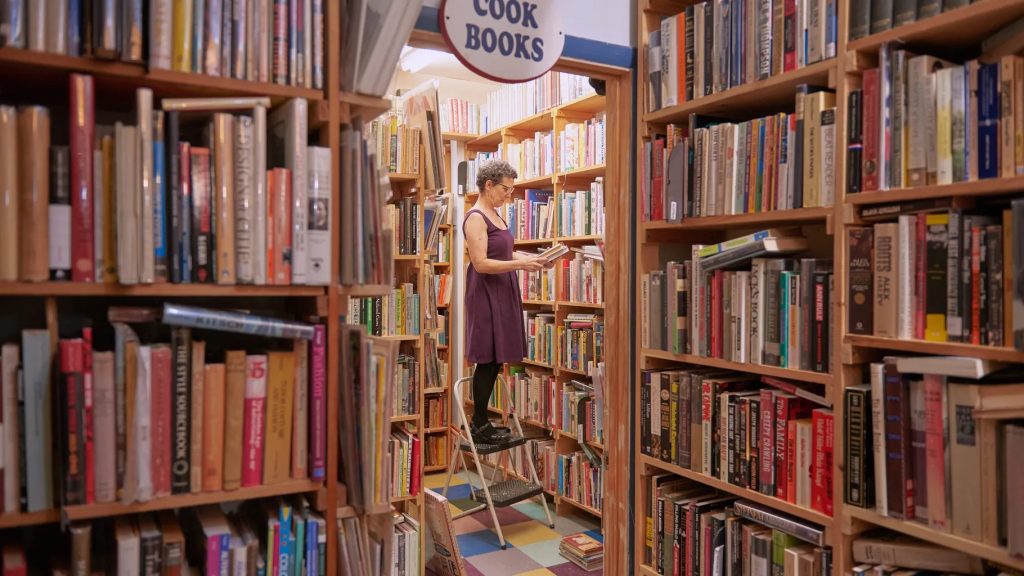
Molly Russakoff, the namesake and owner of Molly’s Books & Records, bookstore journey began when she was born into a family of booksellers. Russakoff’s father owned a bookstore on 10th Street in Philadelphia, PA for years before turning ownership over to Russakoff’s younger brother who moved the business to another location within Philadelphia. Russakoff decided to take her familial business experience to a new property within the same marketplace that she has called home for 35 years.
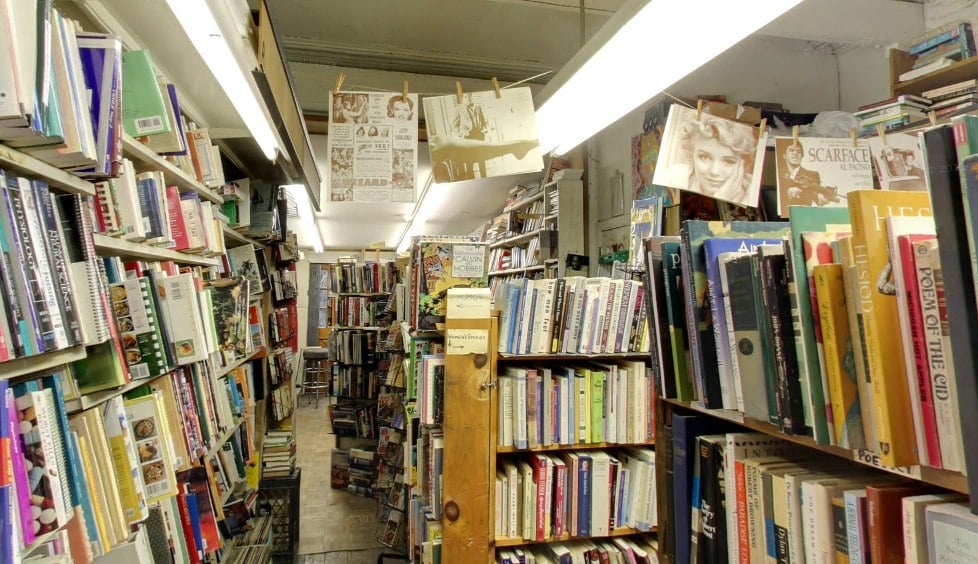
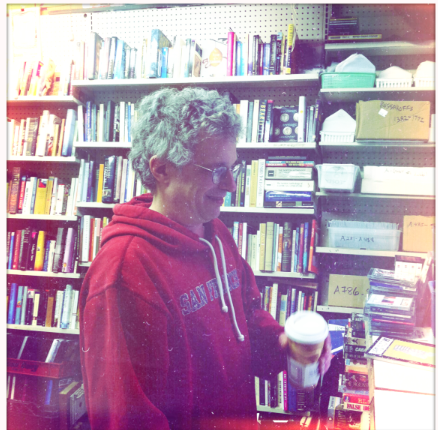
Russakoff’s love of the written word doesn’t just come from her family roots in bookselling. Russakoff studied poetry at Naropa University in Bouler, Colorado. She also was a teaching assistant at “The Jack Kerouac School of Disembodied Poetics at Naropa Institute in 1977 and 1978.” In 1993, she won a Pew Fellowship, a grant given annually to “12 exemplary artists working in the Philadelphia region.” In the early 2000’s, she also worked as an editor of Joss Magazine and the poetry editor of The Philadelphia Independent.
Around the time that she was working for Joss Magazine and The Philadelphia Independent, Russakoff purchased the property that is now known as Molly’s Books & Records. Before it became the beloved used bookstore that it is today, the property changed names numerous times under Russakoff’s ownership. It started as Molly’s Café, adapted to Bella Vista Natural Foods, and then switched to Molly’s Café and Bookstore. In 2009, it officially became Molly’s Books & Records, the name it has proudly displayed for the past 14 years.
Joe Ankenbrand, Russakoff’s husband, holds the musical roots in their partnership of Molly’s Books and Records. In 1964, Ankenbrand started collecting records and never looked back. In the late 1970’s and early 1980’s, Ankenbrand pursued his love of music with his band, Bunnydrums, which is described as a “sci-fi/angular/psychedelic/punk band” on Apple Music. Bunnydrums released three albums before breaking up in 1986 due to an aborted tour and member changes. According to their Apple Music biography, while they were together, they “focused their energies on their home scene and development of a Philly-based society of musicians and artists called the Funk Dungeon.” Since then, Ankenbrand has been very involved in the Philadelphia music scene, now choosing to serve that community by sourcing and selling records.
Molly’s Books & Records embraces its roots as Russakoff and Ankenbrand work tirelessly to connect with the already established Italian marketplace on South Ninth Street. Molly’s is just a small sliver of culture and history within “America’s oldest and continuously operating outdoor market”.
The market was born in the mid-to-late 1880s when a boarding house was opened by an Italian immigrant, Antonio Palumbo. This boarding house quickly became the heart of an Italian community of immigrants, creating the perfect atmosphere to nurture numerous local businesses. Food stalls, produce stands, butcher shops, and more started popping up along South Ninth Street.
In 1915, the commercial character of the Italian Market stabilized when the South Ninth Street Businessmen’s Association was founded. This organization focused on encouraging commercial growth within the Italian Marketplace geographical area. The association was made up of the “community’s leading businessmen (second-generation Italian Americans with ancestral roots in central and southern Italy and eastern Sicily).” By forming this organization, these businessmen were able to get the rights of a corporation under the laws of Pennsylvania “in exchange for ensuring cleanliness, illumination, paving, and police protection within the boundaries specified in its charter.” Once the market had the rights of a corporation, the area was able to boom. More stores began popping up, and news of the marketplace spread. By 1940, the name “Italian Market” was common and well known throughout the city.
The marketplace started to become known for their cuisine. Around 1930, the famous Philadelphia cheesesteak was invented within the Italian Market by hot dog venders Pat and Harry Olivieri. The renowned sandwich is just one of many city favorites to come from this community. Today, over one hundred years later, many of the original vendors and businesses remain. However, the food market itself has diversified as new waves of immigration entered Philadelphia. In 1983, the first Korean-owned establishment joined the many businesses within the Italian Market. From then on, different cuisines – from Mexican, to Chinese, to Vietnamese – can now be found alongside the Italian classics. According to Visitphilly.com, “Award-winning restaurants and neighborhood favorites have solidified the market as a can’t-miss foodie destination.”
The marketplace is rich in culture and history, creating a place like no other, and their website says it best:
“Generations of immigrant families have lived and worked here side by side. Businesses continue to operate in an old-world fashion while recognizing current consumer trends. It is our hope that for the next 100 years S. 9th Street will continue to be a community of immigrants dedicated to the main street small business concept, servicing the community, while continuing this unique shopping tradition.”
-Italianmarketphilly.org
This is a comprehensive timeline of the information presented in this blog post. Green events relate to the Italian Marketplace. Red events are significant moments in Joe Ankenbrand's life and purple events are significant for Molly Russakoff. Blue events are for the store itself.Molly’s Books & Records was lucky to be surrounded by such a strong community when the livelihood of the neighborhood was threatened in 2000, the same year that Molly Russakoff bought the property that eventually became Molly’s Books & Records. Because of a high rate of vacant buildings and land as well as tax delinquency, the Philadelphia City Planning Commission declared that the South Ninth Street neighborhood, which included the Italian Market, was blighted.
According to Vacant Property Research Network, a blighted area is classified as “a physical space or structure that is no longer in acceptable or beneficial condition to its community. A property that is blighted has lost its value as a social good or economic commodity or its functional status as a livable space.” Russakoff had just purchased the building and her dreams for a successful business were already being challenged.
Luckily, the long-standing community of South Ninth Street fought back, working to revitalize the area before the prospective redevelopment date in 2006. The city and the business community worked to “improve sanitation and to rehabilitate the market stalls and awnings.” The storefronts were redone to “reflect the individual tastes, trends, and upkeep of the vendors, with varied facades of red brick, yellow brick, faux stone, aluminum siding, and stucco.” The redesign was successful, and the businesses continued to grow. In fact, in 2008, the founding families of the marketplace sponsored a historic marker to celebrate the heritage and importance of the Italian Market.
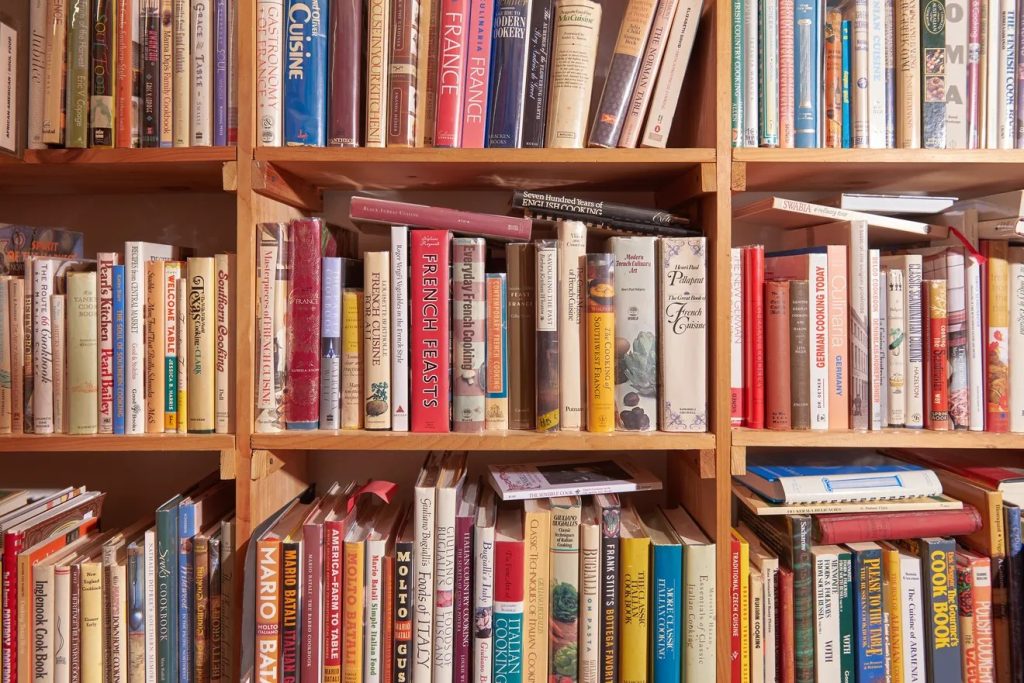
Russakoff and Ankenbrand have learned to lean into the supportive community as they source the products for their store. They are also very conscious of reflecting the community outside of their doors accurately, providing a perfect example of the relationship that exists between bookselling and social responsibility, as established by sociologist Laura J. Miller in her book, Reluctant Capitalists. Miller explains that “For those involved in the book business, furthering diversity is a form of social responsibility” (Miller 82). Russakoff takes the responsibility seriously as she stocks their cookbook section, the largest tie between the store and the endless cuisines outside. Russakoff “prizes global diversity” by ensuring that her store represents different cuisines as authentically as possible. The store has shelves full of different cultures, from Pennsylvania Dutch, to Scandinavian, and so much more. Russakoff ensures that anyone can find their culture in her bookstore and presents endless opportunities for her community to learn about different cuisines through her hand-picked literature.
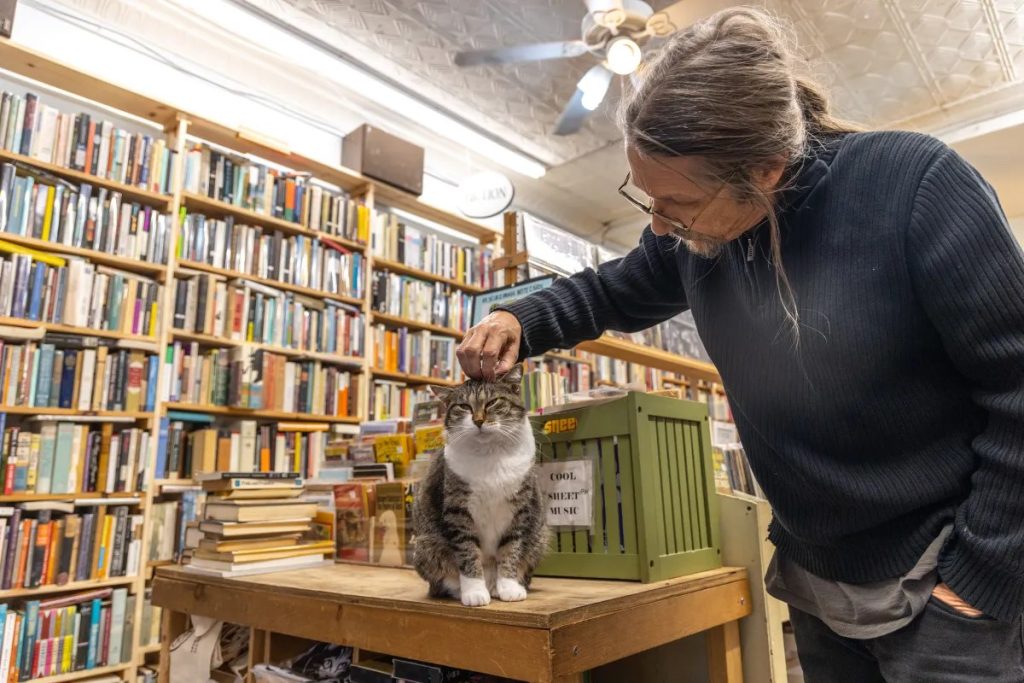
Molly’s Books & Records may fit Miller’s ideas about social responsibility well, but they forgo the patterns of Miller’s other research. Miller discusses the impact of technology on bookselling in her book and establishes that many chains and larger bookstores lean heavily on technology when sourcing their inventory. She describes an automatic system with technology at the forefront. “…new technology has allowed for the scale of operations to increase so that a central headquarters can oversee the buying for hundreds of outlets that serve diverse populations. Reorders for books are automatically generated…” (Miller 75). Russakoff and Ankenbrand run their store in a completely different way than the chains that Miller describes. In fact, Molly’s Books & Records rejects the concept of a technology driven store. In an interview in 2015, Ankenbrand stated that they shy away from an online presence, “When Molly and I started this place together, we said we wanted the best little store in the world. For instance, we don’t put anything online. Anything a customer wants can be found right in the store.” Russakoff and Ankenbrand choose each piece of merchandise that they sell in the store and focus on creating community in face-to-face interactions rather than through a screen, a strategy that has been successful for the past fourteen years of business.
Russakoff and Ankenbrand stepped into a pre-existing community to spread their love of books and records with the populace, taking opportunities to share their passions and explore diverse cuisines through their cookbook section. Their success over the past fourteen years would not be possible without the century of history in the Italian Market and the community that has prospered alongside it.
Works Cited
Amorosi, A.D. “Patti Smith and Molly Russakoff.” Dosage Magazine, 23 Nov. 2022, www.dosagemagazine.com/patti-smith-and-molly-russakoff/. Accessed 8 Oct. 2023.
“Bunnydrums.” Apple Music, music.apple.com/us/artist/bunnydrums/80021998. Accessed 8 Oct. 2023.
CBS Philadelphia. “Top Indie Bookshops in Philadelphia.” CBS News Philadelphia, 9 Feb. 2013, www.cbsnews.com/philadelphia/news/best-indie-bookshops-in-philadelphia/. Accessed 8 Oct. 2023.
DeMuro, Catherine. “Italian Market Q and A: Joe Ankenbrand, Co-Owner of Molly’s Books and Records on 9th Street.” The 9th Street Beat, 3 Mar. 2015, 9thstreetbeat.wordpress.com/2015/03/03/italian-market-q-a-joe-ankenbrand-co-owner-of-mollys-books-and-records-on-9th-street/. Accessed 8 Oct. 2023.
Edwards, Tamala. “Married Couple Shares Their Love of Books, Music at Molly’s Books and Records in South Philly.” ABC Action News, 3 Mar. 2022, 6abc.com/mollys-books-and-records-italian-market-south-philadelphia-art-of-aging/11617396/. Accessed 8 Oct. 2023.
“11 Delicious Things to Eat and Drink in the Italian Market.” Visit Philadelphia, 13 Jan. 2023, www.visitphilly.com/articles/philadelphia/best-things-to-eat-italian-market/. Accessed 8 Oct. 2023.
Felsenthal, Daniel. “One Man’s Trash Is Another Man’s Treasure.” 34th Street, 17 Feb. 2011, www.34st.com/article/2011/02/one-mans-trash-is-another-mans-treasure. Accessed 8 Oct. 2023.
Genova, Ryan. “Molly Russakoff, CHS Grad, Unveils Official Philadelphia Bookstore Map, ~50K Now in Circulation.” Glenside Local, 26 June 2023, glensidelocal.com/molly-russakoff-chs-grad-unveils-official-philadelphia-bookstore-map-50k-now-in-circulation/. Accessed 8 Oct. 2023.
“The History of the Cheesesteak.” Charleys, www.charleys.com/blog/the-history-of-the-cheesesteak/. Accessed 8 Oct. 2023.
“How to Apply.” The Pew Center for Arts and Heritage, www.pewcenterarts.org/apply. Accessed 8 Oct. 2023.
“Italian Market, Philadelphia.” Wikipedia, Wikimedia Foundation, 7 May 2023, en.wikipedia.org/wiki/Italian_Market,_Philadelphia. Accessed 8 Oct. 2023.
Kov, Daniel. “Molly’s Books and Records.” The Secondhand Beat, 12 Mar. 2011, thesecondhandbeat.wordpress.com/2011/03/12/mollys-books-records-part-ii/. Accessed 8 Oct. 2023.
—. “Mostly Books.” The Secondhand Beat, 9 Apr. 2011, thesecondhandbeat.wordpress.com/2011/04/09/mostly-books/. Accessed 8 Oct. 2023.
“Live Poetry Event: David Acosta, Chris Bullard, Colin Morgan and Molly Russakoff.” Moonstone Arts Center, moonstoneartscenter.org/event/live-poetry-event-david-acosta-chris-bullard-colin-morgan-molly-russakoff/. Accessed 8 Oct. 2023.
Miller, Laura J. “Providing for the Sovereign Consumer: Selecting and Recommending Books.” Reluctant Capitalists: Bookselling and the Culture of Consumption, Chicago, 2007, pp. 55-85.
“Molly’s Books and Records.” The Merchant’s Fund, merchantsfund.org/story/mollys-books-records/. Accessed 8 Oct. 2023.
“Our Story.” Mostly Books Philly, mostlybooksphilly.com/. Accessed 8 Oct. 2023.
“Pennsylvania Business Corporations.” Pennsylvania Department of State, www.dos.pa.gov/BusinessCharities/Business/Resources/Pages/Pennsylvania-Business-Corporations.aspx. Accessed 8 Oct. 2023.
“The Philly Sound: New Poetry Weekend.” The Kelly Writers House, writing.upenn.edu/wh/archival/events/phillysound/. Accessed 8 Oct. 2023.
Prihar, Asha. “A Poet, a Doctor, a Muse: Meet the Bookstore Cats of Philadelphia.” Billy Penn at Whyy, 10 Oct. 2022, billypenn.com/2022/10/10/bookstore-cats-philadelphia-mollys-book-trader-pets/. Accessed 8 Oct. 2023.
Schilling, Joseph, and Jimena Pinzón. “The Basics of Blight.” Vacant Property Research Network, 2016, vacantpropertyresearch.com/wp-content/uploads/2016/03/20160126_Blight_FINAL.pdf. Accessed 8 Oct. 2023.
The South 9th Street Italian Market Philadelphia. www.italianmarketphilly.org/. Accessed 8 Oct. 2023.
Tangires, Helen. “Italian Market.” The Encyclopedia of Greater Philadelphia, philadelphiaencyclopedia.org/essays/italian-market/. Accessed 8 Oct. 2023.
Weil, Abigail. “There’s No Place in Philly Quite like Molly’s Books & Records.” Eater Philadelphia, 13 Dec. 2021, philly.eater.com/2021/12/13/22820597/mollys-books-records-italian-market-bookstore-cookbooks. Accessed 8 Oct. 2023.
Images Used
Crowds Next to Pizza Stand. The South Ninth Street Italian Market, www.italianmarketphilly.org/history.html. Accessed 8 Oct. 2023.
Father and Daughter. The South Ninth Street Italian Market, www.italianmarketphilly.org/history.html. Accessed 8 Oct. 2023.
Kov, Daniel. Owner Joe Russakoff. The Secondhand Beat, 9 Apr. 2011, thesecondhandbeat.wordpress.com/2011/04/09/mostly-books/. Accessed 8 Oct. 2023.
Paynter, Kimberly. Mrs. Stevenson. Billy Penn at Whyy, 10 Oct. 2022, billypenn.com/2022/10/10/bookstore-cats-philadelphia-mollys-book-trader-pets/. Accessed 8 Oct. 2023.
Piserchio, Natalie. Molly Russakoff. Eater Philadelphia, 13 Dec. 2021, philly.eater.com/2021/12/13/22820597/mollys-books-records-italian-market-bookstore-cookbooks. Accessed 8 Oct. 2023.
Selling Sanwiches. The South Ninth Street Italian Market, www.italianmarketphilly.org/history.html. Accessed 8 Oct. 2023.
Temple University Library. Cars Driving. The South Ninth Street Italian Market, www.italianmarketphilly.org/history.html. Accessed 8 Oct. 2023.
—. Child Sitting on Cage. The South Ninth Street Italian Market, www.italianmarketphilly.org/history.html. Accessed 8 Oct. 2023.
—. Ordering at a Counter. The South Ninth Street Italian Market, www.italianmarketphilly.org/history.html. Accessed 8 Oct. 2023.
—. Shopping for Produce. The South Ninth Street Italian Market, www.italianmarketphilly.org/history.html. Accessed 8 Oct. 2023.
—. Used Crates. The South Ninth Street Italian Market, www.italianmarketphilly.org/history.html. Accessed 8 Oct. 2023.
W, Brie. Russakoff’s Books and Records. Yelp, 11 July 2012, www.yelp.com/biz_photos/russakoffs-books-and-records-philadelphia?select=V7pKMyKi4dtJMdiXf0L-9Q. Accessed 8 Oct. 2023.
Weil, Abigail. Cookbooks. Eater Philadelphia, 13 Dec. 2021, philly.eater.com/2021/12/13/22820597/mollys-books-records-italian-market-bookstore-cookbooks. Accessed 8 Oct. 2023.



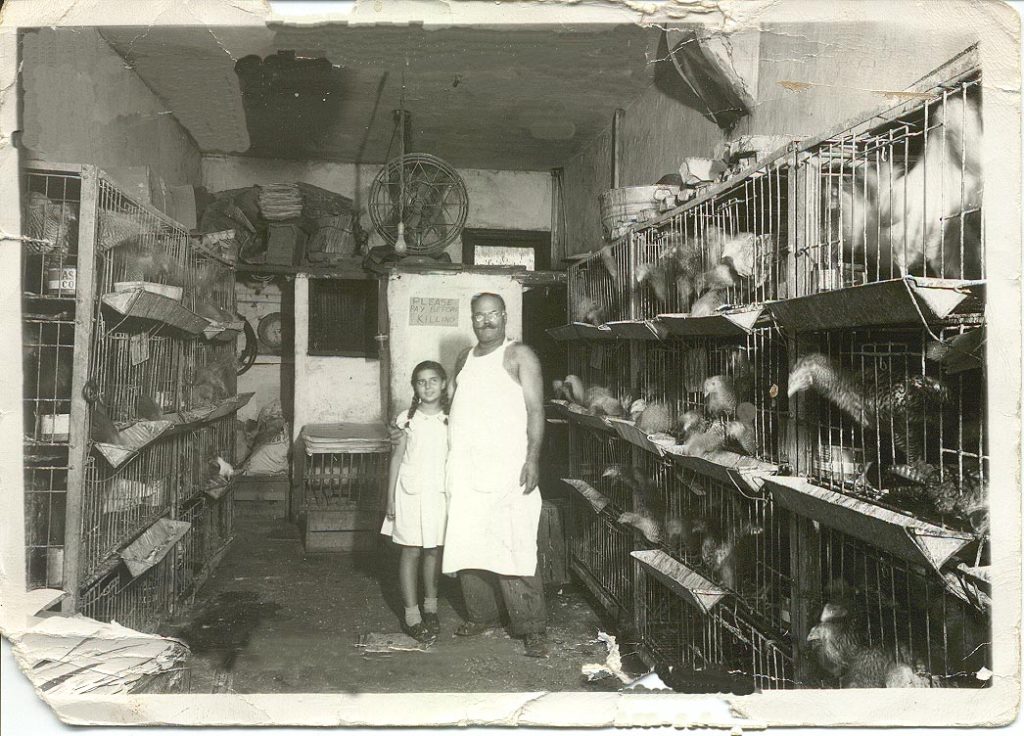





0 Comments